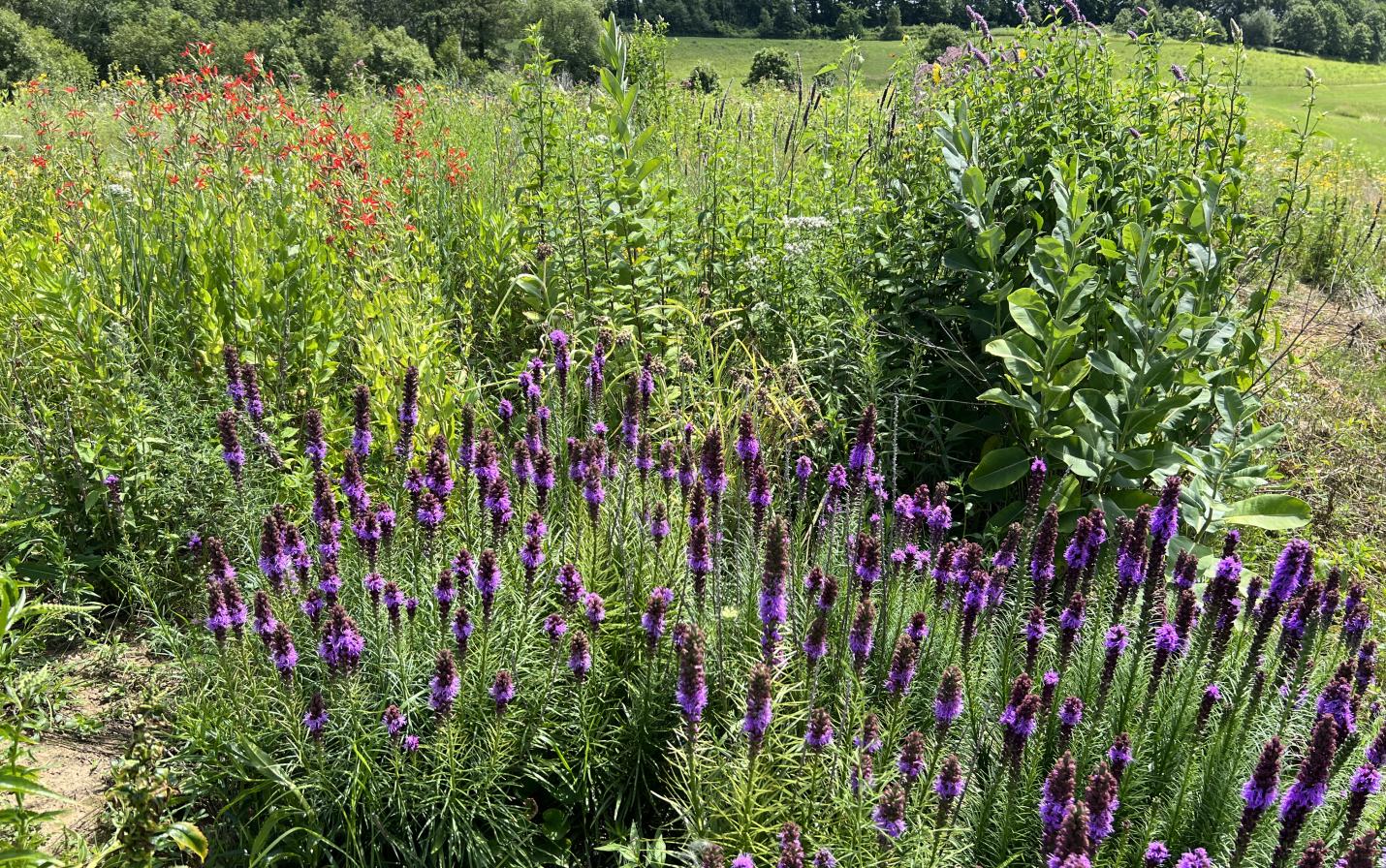
There’s something about the big skies and open vistas of the West that inspire us all. It seems that Mark Grunwald and his sister, Leigh Carlson, both developed their passion for nature and wildlife while studying and exploring out West. Mark, while he was studying biology at Caltech and Leigh, while she was studying in Wyoming and and working in land management in Alaska. Amazingly, their separate paths led to them owning conserved lands that are adjacent to one another in Crawford County, Wisconsin. Today, with their spouses, Ann Grunwald and Forrest Carlson, Mark and Leigh have each signed conservation agreements that protect a total of 109 contiguous acres with Mississippi Valley Conservancy to conserve forever the restored native wildlife habitats they have co-created on the land with the help of Mother Nature.
In the hills just east of Ferryville along Buck Creek Road, both families have been restoring their land over the past couple of decades. The Grunwalds and Carlsons have spent countless hours restoring the dry prairie remnants, planting diverse prairies, and restoring the oak openings and woodlands on their contiguous properties. Their ridgetop land offers an explosion of flowering prairies that hop with bobolinks and eastern meadowlarks in the early summer and are skirted by oak and hickory savannas and woodlands.
The land wasn’t this way when Mark and Ann Grunwald acquired it twenty-five years ago. It had been grazed, in the Conservation Reserve Program (CRP), and row-cropped prior to their purchase. Ann just wanted a cabin – a place to get away for occasional respite from their busy medical practice in Prairie du Chien. She got the cabin, built from CCC-planted pines harvested from Wyalusing State Park. But with it came land that had a thick understory of honeysuckle, prickly ash, and multiflora rose, among other invasive and woody understory plants.
Mark and Ann set out to learn as much as they could about land restoration and conservation from local conservation experts, from reading about restoration practices in books and government publications, and from their own observations. Soon after acquiring the land in 1998, Mark and his sons set out to remove cedars and clear invasive multiflora rose and honeysuckle. Mark and Ann hired Driftless Land Stewardship to create a land management plan which gave them a vision of what the land looked like in early settlement days. In 2005, they received a Wildlife Habitat Incentive Program (WHIP) cost-share grant from USDA to do additional brush clearing, install fire breaks, do prescribed burning, and control noxious invasive plants. While the grant funds were only a small fraction of the total cost of restoring the land, Mark said the encouragement and advice they received from Rick Lange and Carol Fritsche, their USDA agents, were invaluable. As their learning journey continued, they found out from other landowners and conservation experts about the benefits of a conservation easement – a voluntary legal agreement that would protect the fruits of their labor from future subdivision, development, and mining.
When Leigh and her husband Forrest expressed an interest in moving to Wisconsin, Mark and Ann offered to sell part of their Crawford County land to them. In 2008, Leigh and Forrest purchased thirty-seven acres from Mark and Ann and built a house on the ridge for their permanent residence. Now a bigger team, Mark, Ann, Leigh, and Forrest undertook more and more restoration work together. As veterans of Alaska’s DNR, Leigh and Forrest were no strangers to the challenges of land restoration. Mark credits Leigh for much of the work that’s been done to clear the understory and restore the oak savannas. Leigh enjoys moving from one project area to the next, and she has a nursery of prairie plants near her vegetable garden so she can collect seeds and introduce new native species to the ridgetop prairies.
“The Carlsons and Grunwalds have done an immense amount of work to manage a diverse array of habitats. From the remnant dry prairies to the restored prairie plantings, the plant diversity on their properties is very high,” said Chris Kirkpatrick, the Conservancy’s Conservation Manager. These natural communities also provide habitat for some rare species, such as the federally threatened rusty patched bumble bee, which has been observed on their restored prairies, and the state threatened slender bushclover found in their remnant prairie. The property is also a haven for grassland and savanna birds, including bobolinks, meadowlarks, red-headed woodpeckers, brown thrashers, and field sparrows. Even more impressive are the oak openings and woodlands that have been restored by their joint efforts – an ongoing project. “Functional oak opening is globally rare, and the families have conserved these rare habitats for the wildlife and for future generations,” said Kirkpatrick.
“The deep-rooted prairie plants the Grunwalds and Carlsons have established on the former row-crop fields are ideal for slowing rainwater, minimizing erosion, storing carbon, and feeding the pollinators and birds,” said Kirkpatrick. “It’s a very resilient habitat that can tolerate weather extremes. That’s why it’s green in this drought year when many homes are surrounded by brown lawns.”
Conserving the Grunwald and Carlson properties also supports the Conservancy’s climate action plan by adding to a growing corridor of protected land in the surrounding watershed. Five other conserved private properties are in the watershed, plus one of the Conservancy’s public-access nature preserves, Sugar Creek Bluff State Natural Area. The native birds, insects, fish and wildlife will always find the habitats they’ve depended upon in this growing corridor of conserved land.
The Grunwalds and Carlsons plan to continue with their stewardship of the land as they carefully consider the impact of each plant and tree they add or remove while enjoying their bird’s eye view from the ridgetop.